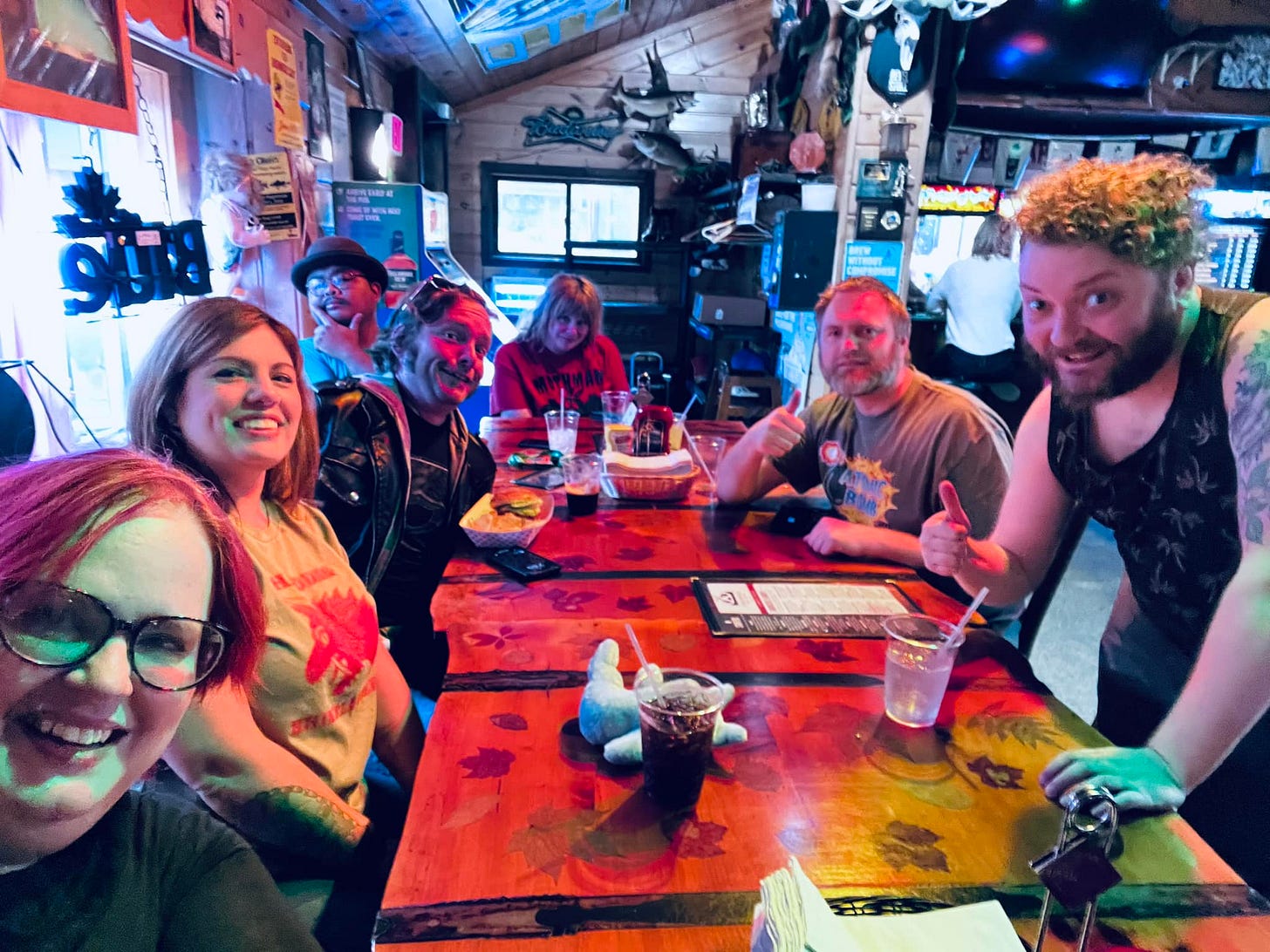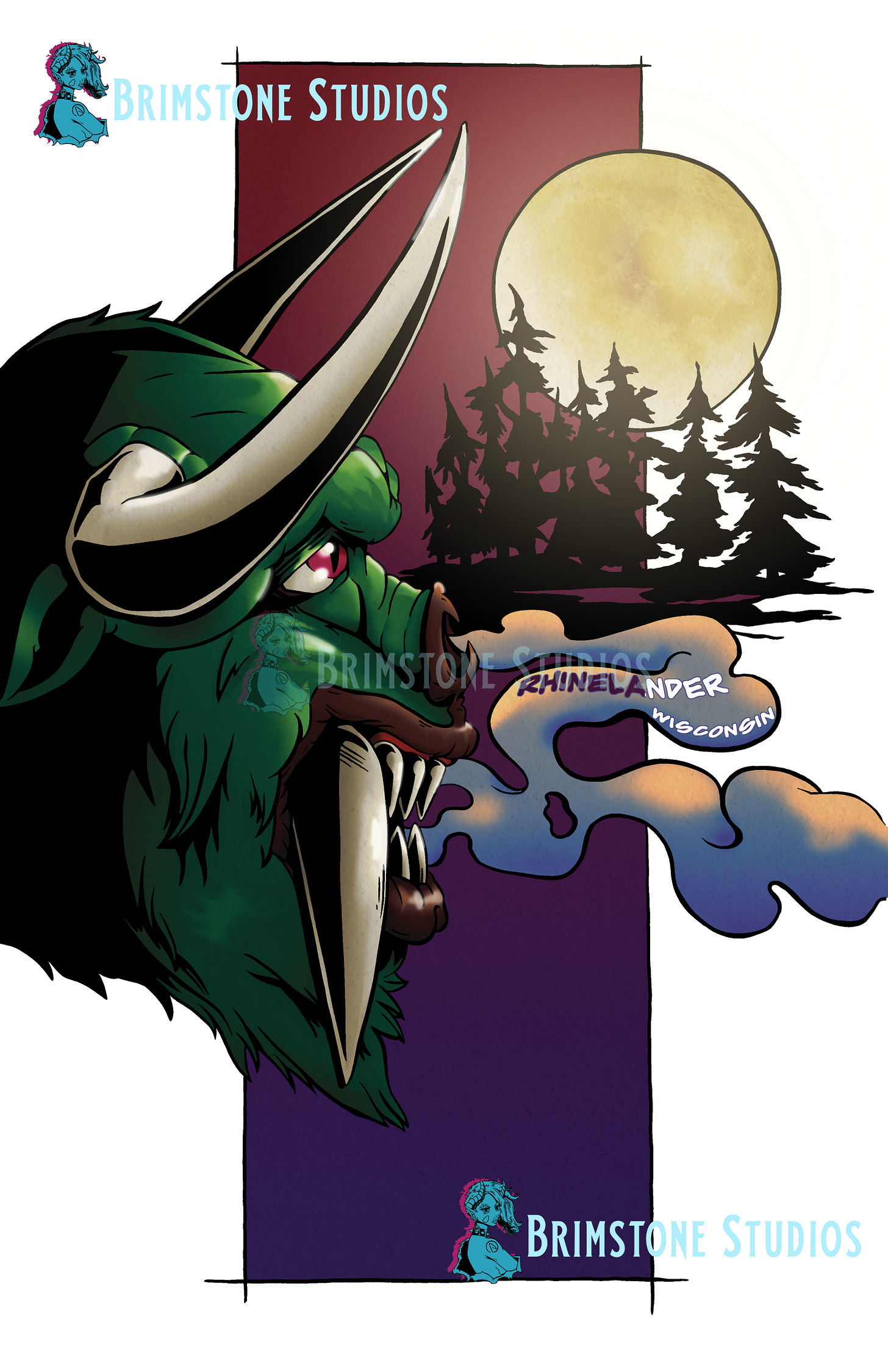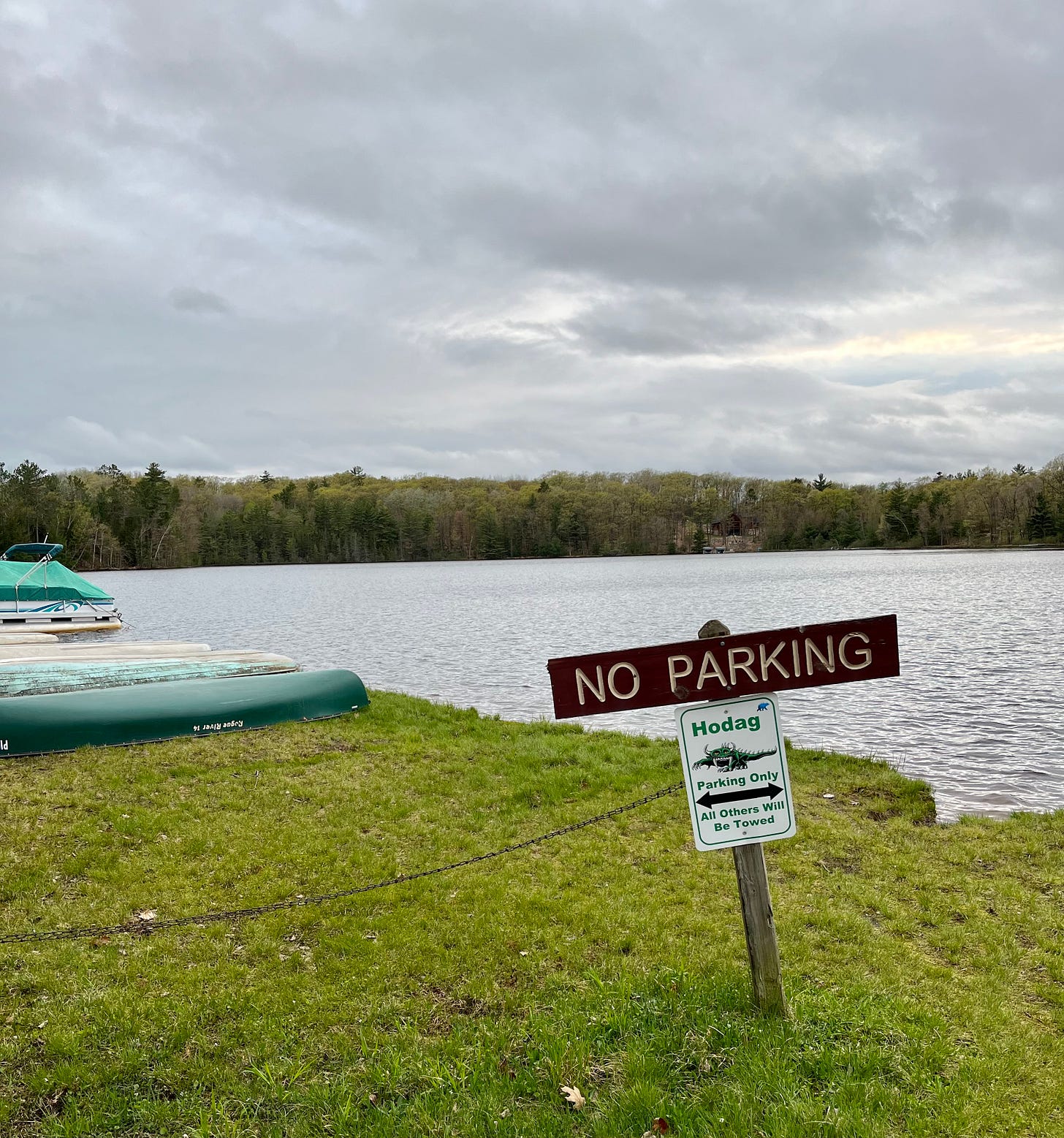There’s something undefinable about pulling a tent out of it’s bag five years after its last deployment. Shaking out sleeping bags with a similar static existence while trying to figure out which side of the tent is the front door is something I’d forgotten. Luckily, it comes back like riding a bicycle. Several questions ran between Cathryn and I as we set up camp in Rhinelander, Wisconsin. “Which sleeping bag did I prefer? Do we always lay a blanket down on the floor? Did you bring a flashlight? What was that sound?” The woods of Rhinelander have a legend of a large, black furred monster. It wears horns and bears tusks and is mottled with green. It’s spine is lined with barbs that lead to the tip of a reptilian tail. Over a century ago, stories spread by lumberjacks and townsfolk were collected by Gene Shepard who claimed to see and capture the monster known as the Hodag.
The sound we heard that night wasn’t the Hodag. It was the call of a loon. The loon cried into the night as we established camp and shivered ourselves warm in the 36 degree Fahrenheit hills. All the shuffling in the dark was obscured in shadow. We, in fact, did not bring a flashlight. However, our reasoning reminded us that the shuffling was Hue Gogh, our Labrador Retriever, who was on his first camping trip. He’d never slept in a tent before, putting his trust in us to show him that it was just a thing that happens: we camp.
I hadn’t slept on the ground for half a decade. I’m a bit more out of shape, now. I’m a bit stiffer, and less easy to sleep, too. When I stood the next morning, my body reminded me of those facts. I didn’t have time to argue with it. We had another tent to set up at Hodag Heritage Festival where I’d spend the day selling prints of things that go bump in the night, things that challenge our beliefs, and things that remind us of the 90s. Camping is far cheaper than hotels and AirBnB’s. I’d been firm this year I’d do as much camping and staying with friends as possible. The cost of running around the Midwest was made easier by laying on the ground for two nights. Plus, Cathryn and I used to be pros. We’d camped our way to both coasts. We could easily handle two nights in the Northwoods.
My Hodag print is exclusively available on my InPrint!
Rhinelander isn’t a small town, but it isn’t necessarily big. Now, several decades after Gene Shepard’s Hodag had been admitted to the annals of hoaxery, the town has held onto the mythology as a part of their identity. The school teams are Hodags. You can find statues of the creature all around their downtown. You can even drink a green beer this time of year, tinted with the hints of it’s fur. The monster is everywhere.
I don’t know how many of these Wisconsinites believe there’s a bulldog chomping Hodag running rampant in their dense forests. If you ask me, there probably wasn’t ever a monster lurking in these trees. I appreciate the stories of sightings and speckled evidences. I’m fascinated Gene Shepard was able to bring the monster to life as a sideshow attraction of fur and leather glued to a log, but I am not convinced. I like to rely on the technical aspect of the null hypothesis when approaching these claims: “a default hypothesis that a quantity to be measured is zero or null”. With that stance, we can observe the evidence and missing bulldogs in order to ask, “is this evidence pointing to a Hodag or not a Hodag?” I think in every situation, other explanations that can be demonstrated, explanations in the not-a-Hodag category, do a great job of filling the blank.
Sometimes, when I let myself express honest skepticism, I hear people say that I am, “killing the magic,” or, “ruining the fun.” But that’s not the point. Honest skepticism helps me sleep on the ground in the woods at night, it helps me appreciate the reality of how we got the legends we have, and it let’s me embrace the mythology without sending me into the woods looking for monsters.
During the festival, the Hodag was more real than it had ever been. There were plush toys, prints, beer, t-shirts, and demonstrations. The high school marching band opened the day. Reenactments of Gene’s sideshow tantalized the minds of folks of all ages. I even heard more than forty Hodag calls belted out from the guttural warbles of contestants putting their voices to work to bring the monster to life.

Maybe I’m too quick to say that I’m not a true believer. But, there’s only one place where the Hodag is real, that’s Rhinelander. It’s a part of who the town is. Then, once a year, the monster is absolutely real at Hodag Heritage Festival. I’m always here for growing imaginations and building community. This monster got us to the Northwoods when we otherwise would have stayed home. It inspired creators from around the country to descend on Rhinelander to celebrate and to share a meal in a tiny, loud, unforgettable bar. It got Cathryn and I back in a tent.
Festivals like this always go incredibly fast. Before we knew it, we’d risen on our final morning. Nothing gobbled us up in the night, not even the ravenous mosquitos. The tent folded up as if it was ready to. Hue Gogh, the Labrador huffed a sigh. He was ready, as we were, to get home. After a lengthy drive, we returned to our little slice of reality, Cathryn and Hue Gogh slept off the weekend. I contemplated the lumberjacking superstitions and creative tricksters like Gene Shepard. Their campfire stories gave us, and so many others, a great weekend. Sometimes it’s okay to dream of monsters.





